![A transport of Jewish prisoners marches through the snow from the Bauschovitz train station to Theresienstadt. [LCID: 69720]](https://encyclopedia.ushmm.org/images/large/781755a6-1ba5-4d8e-8b2b-9f25bdf3687f.jpg)
Browse an alphabetical list of photographs. These historical images portray people, places, and events before, during, and after World War II and the Holocaust.
<< Previous | Displaying results 1-14 of 14 for "Photo" | Next >>
At the Kaiser Wilhelm Institute for Anthropology, Human Genetics, and Eugenics, a racial hygienist measures a woman's features in an attempt to determine her racial ancestry. Berlin, Germany, date uncertain.
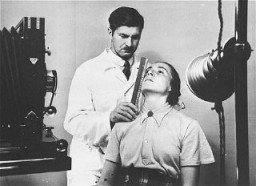
Portrait of the family of Mushon and Rebeka Kamchi in Bitola. Isak Kamchi is pictured in the front row at the right. Isak was born in Bitola. Several of his siblings and cousins left Macedonia for Palestine and North America before the war. During World War II, Isak served as the leader of a partisan unit operating in Croatia. He established a safehouse at his parent's home in Zagreb where partisans could rest and recuperate. His mother ran the safehouse, cooking for the men and nursing them back to…
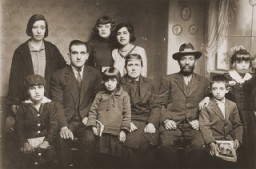
Defendants Karl Dönitz (left), Erich Raeder (center), and Baldur von Schirach under guard in the defendants' dock at Nuremberg.
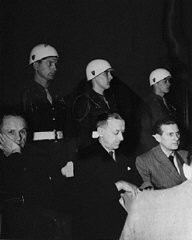
Photograph of Karl Höcker. He is standing in front of an air raid shelter.From Karl Höcker's photograph album, which includes both documentation of official visits and ceremonies at Auschwitz as well as more personal photographs depicting the many social activities that he and other members of the Auschwitz camp staff enjoyed. These rare images show Nazis singing, hunting, and even trimming a Christmas tree. They provide a chilling contrast to the photographs of thousands of Hungarian Jews…
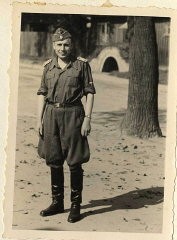
Karl Höcker (on left, looking at the camera) relaxes with SS physicians, including Dr. Fritz Klein (far left), Dr. Horst Schumann (partially obscured next to Klein, identified from other photographs), and Dr. Eduard Wirths (third from right, wearing tie).From Karl Höcker's photograph album, which includes both documentation of official visits and ceremonies at Auschwitz as well as more personal photographs depicting the many social activities that he and other members of the Auschwitz camp…
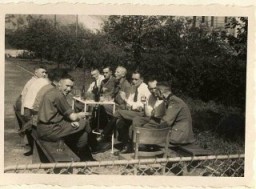
Kaufbeuren euthanasia facility. Killings by lethal injection took place in Kaufbeuren. Germany, 1945.
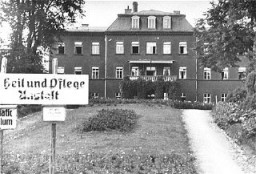
The entrance gate to Kaufering IV subcamp of Dachau. This photograph was taken after liberation. Near Landsberg, Germany, after April 28, 1945.
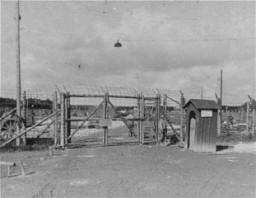
Site at which the SS shot and burned the last 45 of 48 prisoners at Chelmno. The other three prisoners escaped. Chelmno, Poland, 1945.
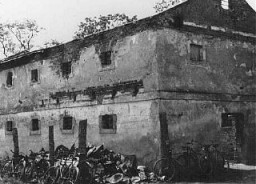
King Christian X. According to popular legend, King Christian X chose to wear a yellow star in support of the Danish Jews during the Nazi occupation of Denmark. In another version, the Danish people decided to wear a yellow star for the same reason. Both of these stories are fictional. However, the legend conveys an important historical truth: both the King and the Danish people stood by their Jewish citizens and were instrumental in saving the overwhelming majority of them from Nazi persecution and death.
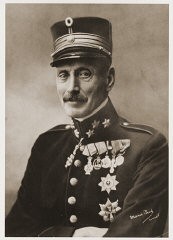
Klara Taussig and Ernst Brecher go on an outing in the Austrian countryside before their marriage. They later had a son, Heinz, who was born on August 29, 1932 in Graz, Austria. where his father was a merchant. After the Germans annexed Austria in 1938, Klara and Ernst sent Heinz to live with friends of an aunt in Zagreb.Heinz survived and eventually came to the United States on the Henry Gibbins, a military troop transport. Klara and Ernst died in the concentration camps. Photograph taken…
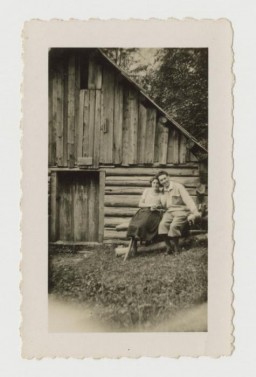
SS Lieutenant Klaus Barbie in Nazi uniform. Barbie, responsible for atrocities against Jews and resistance activists in France, was known as the "Butcher of Lyon." Germany, date uncertain.
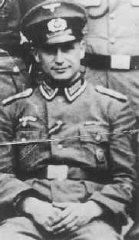
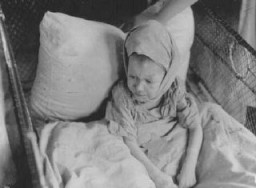
Scene photographed by George Kadish: Jewish prisoners behind a barred window in the Kovno ghetto jail. The Jewish council administered its own jail in the ghetto. Kovno, Lithuania, 1943.
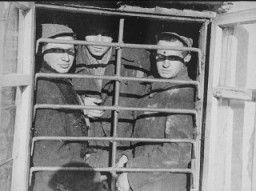
A meeting of the Kovno ghetto Jewish council. Chairman Elchanan Elkes sits at the center. Kovno, Lithuania, 1943.

We would like to thank Crown Family Philanthropies, Abe and Ida Cooper Foundation, the Claims Conference, EVZ, and BMF for supporting the ongoing work to create content and resources for the Holocaust Encyclopedia. View the list of donor acknowledgement.